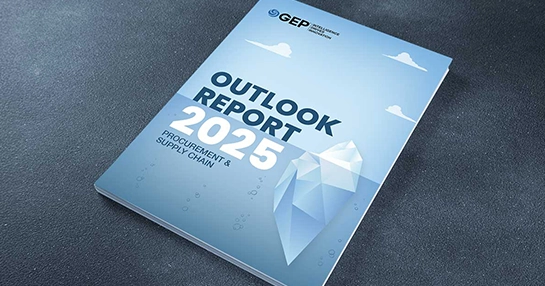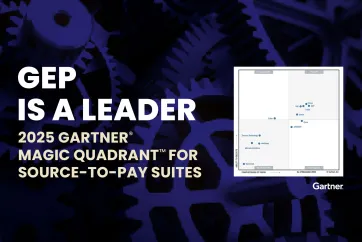Beyond Hype: The AI Revolution
Generative AI is revolutionizing procurement and supply chain management by enhancing visibility and efficiency. However, data quality and accessibility remain key inhibitors to effective AI implementation.
For insights on overcoming these challenges, watch this GEP INNOVATE 2024 session with GEP’s Neha Shah and CNBC’s Susan Caminiti.
Key Discussion Points:
GEP INNOVATE 2024: Jumpstarting your AI program - the DOs and DON'Ts
Powering the Future: Insights from GEP INNOVATE 2024
The transition to renewable sources is critical to meeting a soaring energy demand. But there are significant obstacles to overcome first. Regulatory barriers, supply chain disruptions, the need for efficient, balanced energy portfolios, and more…
Find out how industry leaders are responding to these challenges. Watch this power-packed GEP Innovate 2024 discussion, in which industry leaders share real-world insights on navigating challenges and how technology, supply chain management and innovative strategies are shaping the future of energy.
GEP INNOVATE 2024: Transforming Tail Spend Management with AI
Low-value transactions, a high number of suppliers, the lack of cost baselines, no supplier negotiations. It has always been notoriously difficult to manage tail spend.
Until AI, especially generative AI, entered the picture. AI is simplifying the intake process, guiding users, initiating negotiations and streamlining communication — all without adding extra work for procurement or buyers.
In this GEP INNOVATE 2024 session, GEP vice president Joel Johnson shares AI-driven strategies and tools transforming tail spend management, along with real client success stories.

7 Steps for Successful Purchase Order Processing (And How Can AI Help)
November 18, 2024 | Procurement Strategy
Purchasing is a substantial cost center for organizations, with indirect spending accounting for 20-30% of revenue. Procurement processing can involve hundreds or even thousands of purchases each month.

Unlocking the Power of Purchase Order Collaboration
November 16, 2024 | Procurement Strategy
Effective purchase order collaboration has become a crucial element in streamlining procurement processes and optimizing supply chain operations for enterprises today. It fosters open communication and shared visibility throughout the order lifecycle, enabling companies to improve efficiency, reduce costs and drive overall supply chain performance.

Strategic Sourcing Vs. Category Management
November 16, 2024 | Sourcing Strategy
Organizations often use two of the most common procurement strategies – category management and strategic sourcing, interchangeably.
As a result, they fail to exploit the benefits of what each strategy has to offer.
To understand and utilize both these procurement strategies effectively, it is essential to understand the key similarities and differences in strategic sourcing and category management.

7 Strategies for Optimizing Indirect Procurement Categories Spend
November 16, 2024 | Cost Management
Failing to optimize indirect spend leads to significant financial inefficiencies. Without a clear view of spending patterns, organizations are prone to overspending and missing out on cost-saving opportunities. This lack of visibility results in fragmented purchasing practices and missed opportunities to negotiate better contracts.

Is Your Accounts Payable Still Manual? Here’s Why You Should Switch to AP Automation
November 16, 2024 | Accounts Payable
Not many people in the office talk about accounts payable. Everybody knows it’s basically routine back-end operations involving the processing and payment of supplier invoices.
But this function comes into the picture almost immediately when a supplier complains about their payment getting delayed. In such a situation, procurement and accounts payable teams often blame each other.
Irrespective of who is to blame for the payment delay, the relationship with the supplier is likely to deteriorate. This can hurt the business in the long term.
Pagination
- Previous page
- Page 10
- Next page



